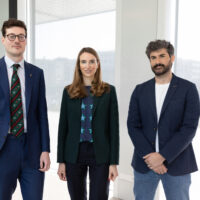The Art Law Foundation aims to promote and coordinate, on a national and international level, the work and research on the most topical questions related to art and cultural heritage law.
The Foundation also supports the activities of the academic Art-Law Centre.
Foundation’s news
Art dans l’espace public – Un guide des bonnes pratiques
We are delighted to announce the publication of the practical guide Art dans l’espace public – Un guide des bonnes pratiques Expertise professionnelle et recommandations juridiques co-produced by the FDA and the Fonds cantonal d’art contemporain de Genève (FCAC). Sculptures, installations, interventions murales, œuvres sonores… L’art dans l’espace public se pratique partout en Suisse, en... View Article
RAM Antiquities Transaction Due Diligence Toolkit
RAM is launching the Antiquities Transaction Due Diligence Toolkit! While the antiquities market has many similarities to the art market in general, it also presents unique challenges. For this reason, RAM has developed a dedicated appendix to its Art Transaction Due Diligence Toolkit. You may access the Toolkit here: https://www.responsibleartmarket.org/guidelines/art-transaction-due-diligence-toolkit/ Images of the RAM Panel at The Art... View Article
Events
Vever, collectionneur et joaillier – Entre Art Nouveau et Orient : une histoire de transmission
We are delighted to invite you to our next “exclusive members event“, which is kindly offered by the Société des Amis du Musée d’Art et d’Histoire de Genève and invites you to a private tour of the exhibition Vever, collectionneur et joaillier – Entre Art Nouveau et Orient : une histoire de transmission on Thursday 20 November 2025, at... View Article
RAM Conference | The role of banks in art transactions
The art market has grown into a multi-billion dollar industry where trust, transparency, and liquidity are paramount. Banks play a critical yet often understated role in shaping this ecosystem – whether through financing, due diligence, risk management, or compliance with anti-money laundering frameworks. In recent years, financial institutions have become increasingly vigilant in their approach to art transactions, reflecting both regulatory demands and the need to protect clients’ interests.






